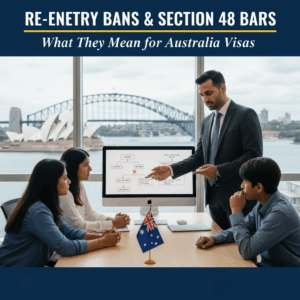Learn how migrants can transfer a foreign license, drive legally, and access private transport options in Australia.
Introduction
Over 40% of new migrants rely on private vehicles soon after arriving in Australia. For many, navigating driving license transfer for migrants is essential for employment and daily life. This article explains license conversion, covers state rules and private transport options, and offers practical tips for safe, legal driving as a newcomer.
Understanding Driving License Transfer in Australia
Transferring your foreign license to an Australian one is often required after settling, especially if you plan long-term residency. Each state sets specific rules—most allow driving with an overseas license temporarily (usually up to three months) before requiring conversion.
The process generally includes:
- Determining your eligibility for direct conversion without testing (some countries, like the UK, France, and Japan, are eligible; others require theory and practical exams).
- Gathering documents: original overseas license and certified translation if not in English, proof of identity and address, visa or residency documents, and recent passport-size photo.
- Completing state application forms in person (e.g., local Department of Transport).
- Passing an eye test and, in some cases, written/road tests if your country is not on the exemption list.
- Surrendering your foreign license on approval (some states return it later).
Major states like NSW, Victoria, and Queensland have unique forms and processes—always check local authority requirements for state rules for license conversion Australia.
Driving with an Overseas License: What Migrants Need to Know
For new arrivals, driving in Australia with an overseas license is permitted for the initial period, but rules vary:
- Your foreign license must be current and, if not in English, accompanied by an official translation or International Driving Permit (IDP).
- After the allowed period (often 3 months), you must transfer to an Australian license to continue driving legally.
- Some temporary residents (e.g., students) may be permitted to drive longer on overseas licenses, but this does not apply if you gain permanent residency.
The international driver license exchange process is more straightforward for licenses from recognized countries. Otherwise, passing Australia’s driving tests is mandatory. Attempting to drive without a valid, properly transferred license can result in significant penalties.
Buying and Registering a Private Vehicle as a Migrant
Owning a car provides flexibility and independence. However, car ownership for new immigrants in Australia comes with important steps:
- Choosing the Vehicle: Consider local models, insurance costs, and your budget. Used cars can be affordable, but inspect for roadworthiness.
- Registration (Rego): All cars must be registered in your state—this includes paying registration fees and, in some states, mandatory inspections11.
- Insurance: At minimum, Compulsory Third Party (CTP) insurance is mandatory. Additional coverage like comprehensive or third party property insurance is strongly advised11.
- License Check: You must have a current and valid Australian license or a recognized overseas license during the registration process.
- Private Vehicle Registration Australia: The process usually involves proof of identity, evidence of address, vehicle inspection reports, and payment of fees.
If you’re renting or buying, compare private transport options for migrants—including ride-sharing, car-sharing, or leasing. Each option has pros and cons, but owning a vehicle gives maximum autonomy for work and family.
Conclusion
Successfully transferring your driving license and understanding private transport options is vital for new migrants in Australia. Meeting state regulations ensures both safety and compliance, while careful planning will make your mobility smooth and stress-free. Begin your driving license transfer early and explore private transport choices to get your journey started with confidence.
